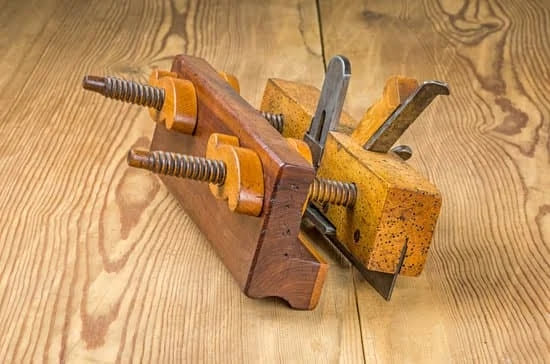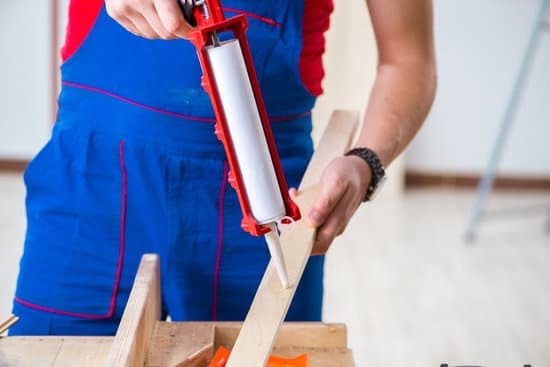
Woodworking tools and equipment are essential for those who work with wood in order to turn it into their desired shape and size. It can include saws, drills, blades, sanders, sharpeners, bits, chisels and many more.
Some of the equipment can be a bit complex for beginners and it is important that you fully understand how to handle them before you get started on any project. Having the tools and equipment to start out with enables one to have good control over a project and allows the creation of a variety of different types of pieces with precision accuracy.
Types of Woodworking Tools and Equipment When beginning your journey in woodworking there are several basic tools that you will need to get started such as chisels, saws, planes, hammers, screwdrivers etc. As time goes on you may wish to add onto these basics with more specialized tools such as shapers, jigsaws or routers which allow one to create intricate curves and detailed designs when working with wood.
Aside from these hand-held tools there are other essential pieces of woodworking equipment that are very useful such as saw horses which provide support when cutting large pieces of wood and clamps which hold parts together until ready for glue application or nailing. Another great tool is the planer which is used in producing accurate thicknesses on board edges when planing stock material down before shaping it into its desired design.
Safety Tips When Using Woodworking Tools and Equipment Whenever using tools and equipment during woodworking projects it is always important that safety should come first. It can be easy to forget how sharp some of the saw blades or drill bits can be so making sure they are securely stored away when not being used is paramount.
You should also make sure that all electrical cords are away from water or damp surfaces so that they don’t become wet while in use or cause trip hazards if left lying around in your workplace area.
Additionally use personal protective equipment whenever needed such as goggles eye protection or gloves when creating dusty areas sanding or cutting pieces of wood by hand. Ultimately using common senses when handling sharp edges heavy pieces flooring etc., will significantly reduce any chances you could hurt yourself while working on your project tasks.
Essential Toolbox Essentials for Woodworking
For those who are beginning woodworking, it is important to have a well-equipped toolbox with all the necessary tools and equipment. It is essential to do your research in order to know what tools are needed before you embark on any project. Generally, the following items should be included: measuring tape, saws, chisels, clamps, drill bits, routers, sandpaper and other general shop supplies.
Measuring Tape
The measuring tape is used to measure accurately when transferring measurements for cutting and fitting pieces into each other. Be sure to get a long enough tape measure so that it can cover most or even all of your woodworking projects. Some tapes come in metric and imperial units which could be useful depending on the type of measurements you might need for a project.
Saws
Saws should always be used when making cuts in woodwork as they are sharp and accurate. They come in different types – Handsaw or power saws such as circular saws and radial arm saws. Selecting the right saw depends on what kind of project you are undertaking: A handsaw may be more suitable for smaller indoor tasks whereas a power saw would suit larger outdoor jobs such as deck building or fence making.
Chisels
Chisels are used to shape wood by removing parts of them; they can also create joints between two parts by joining them together using special methods like dovetailing etc Before using one make sure that the blade is sharpened correctly as this improves accuracy while cutting away sections of material.
Chisels come in various sizes which depend on the purpose; some of them have short handles while others have longer ones which makes it easier to manipulate them effectively while handling difficult corners or edges.
Highlights of Different Hand Tools
Many types of wooden items require precise cutting and shaping. Though most woodworkers use power tools in their crafts, a variety of hand tools can help with delicate or complex finishes. The following is a list of the essential hand tools:
- Chisels: A chisel is one of the most important tools for any woodworker. It helps create perfectly straight cuts in both soft and hard woods. Chisels come in various shapes and sizes. It is advisable to start with basic shapes such as flat, bevel-edged, v-shaped, and U-shaped chisels.
- Knives: A knife is like a precision tool used for creating detailed cuts in intricate shapes, as well as splitting and tapering edges. Different types of knives include pocket scissors knives, utility blades with long edges. There are even specific specialist knives for carving out thin curves.
- Hammers: In carpentry projects, hammers are essential in nailing pieces together securely. Hammerheads come in many different varieties depending on their size and intended use – from framing hammers that have large striking faces to tack hammers with heads that make smaller nails easier to insert.
Power Tools Used By Woodworkers
Power tools provide the utmost convenience when it comes to working with wood and they reduce the amount of time needed to craft perfect designs quickly. The following is a list of power tools used by woodworkers:
- Drills: Drills are often used for boring holes into wood so that screws or nails can secure pieces together. Their functions range from simple manual drills to cordless or hammer drills offering increased speed and greater accuracy over harder materials.
- <bSaws: </bSaws offer more versatility than other power tools and they come designed for making curved cuts as well as straight lines through thicker material or bulkier designs. Circular saws are versatile machines capable of slicing through metalsheets unlike jigsaws that only work on lighter materials.
- <bSanders: </bSanders are another frequently used tool in a woodworking shop providing smooth finishes on larger surfaces so there are no divots or imperfections visible on exposed pieces.
Power Tools for Woodworking
Power tools are a must-have for any woodworking project. Power tools make work faster and more precise, allowing professional-level results that would otherwise take countless hours to complete by hand. Many common woodworking projects require the use of power tools for cutting, planing, sanding finishing and shaping. Popular power tools for woodworking include:
- Circular Saw: A powerful and versatile saw used for making straight cross-cuts, curved cuts and beveled cuts in both thick and thin materials.
- Table Saw: This powerful tool features a circular blade that is mounted on an adjustable table, making it a great choice for making consistent rip cuts.
- Planer/Joiner: These machines are essential when it comes to creating perfectly square edges on raw timber in preparation for jointing.
- Router: Routers are used to create rounded edges on boards in addition to other specialized shapes, while also making rabbets, dadoes and mortises.
- Bandsaw: This essential tool makes straight or curved rip or cross cuts as well as carrying out re-sawing operations without tearout from the blade entering or exiting the cut.
In addition to these widely used power saws there is also essential equipment including drill presses, lathes, oscillating spindle sanders and dust collectors that you may need depending on your specific project requirements. Lathes can be used to create precision workpieces such as furniture legs, spinning tops or even delicate patterns suitable for turning ornamental objects.
Whereas drill presses are capable of delivering drilling action with much greater accuracy than manual drills coupled with being able to apply straight cuts in metal and other materials like glass or ceramic tile regardless of their thickness.
Oscillating action works similarly to handheld belt sanders by moving the paper up and down so you must only look over large areas instead of smaller sections at a time – saving you time in those large projects. Dust collection systems play an important role in protecting your lungs against fine particles from sawdust by providing a suction system which sucks up dust from your workspace into storage sacks or chambers.
Pros and Cons of Manual vs Power Tools
Power tools and manual tools have different pros and cons depending on the job they will be used for.
Manual woodworking tools can include chisels, saws, planes, coping saws, measuring tape, or other items of a similar nature. The main benefit of manual tools is that they require no electricity to use them; instead they run solely on physical power from the user. This removes the worry of having access to a power source and strengthens hand-eye coordination which develops over time with practice.
Another added bonus is that most handwoodworking tools require minimal maintenance and are fairly easy to repair if they break over time. The main disadvantage of using manual tools is that depending on the size of the job it can take significantly longer than with mechanized methods such as power tools and tedious repetitive motions involved in woodworking can cause fatigue over prolonged use.
Power woodworking machines include routers, jigsaws, drill presses, sanders, lathes and saws like tablesawsm, bandsaws or track saws. As well as being faster than manual options due their electric parts these machines enable users to make precision cuts far quicker without any loss of accuracy or consistency.
That being said they do come with some drawbacks such as they tend to be more expensive than manual variations and require regular maintenance such as dust collection attachment changes or occasional oiling in order for optimal performance. Furthermore unlike manual options which are fairly easy to fix when something goes wrong with machinery breakdowns usually requires professional assistance (or near professional level knowledge) in order to get them back running smoothly again.
Overall choosing between manual and mechanized woodworking equipment really comes down to what kind of project you plan to work on, budget available along with skill set your working with or learning about a hobby you want to take up in order to decide what tool best fit you needs. While both types off equipment can certainly produce amazing results its important acknowledge their advantages and disadvantages before deciding on trying out either method further down the line.
How to Select Woodworking Tools for Specific Projects
When it comes to woodworking, one of the most important investments you will make is in your woodworking tools and equipment. Knowing what each tool is for and what it does can go a long way towards getting the job done faster and with more precision. Before selecting tools for specific projects, there are a few things to consider.
Understanding What You Need
When selecting specific tools for a project, you must first understand what that particular project will need. If it involves cutting pieces of wood to certain lengths or making intricate shapes, then you could need both standard handheld tools like saws or chisels as well as power tools such as routers or drill presses. It is also important to consider how precise the finished product needs to be when choosing the right tool for the job.
Adequate Resources
Once you know which tools are required for your project, you should look into having some extra resources allocated for use if needed. Having backup tools on hand is important because they can save time if something unexpected should happen while working on the project. For example, having an extra saw blade or drill bit in case one gets worn out or breaks could keep you from unnecessary delays when completing jobs.
Compatibility With Project Material
Researching and understanding different materials used in woodworking projects and understanding how each material relates to each tool is equally important when selecting the proper equipment for a task. Different types of woods react differently to various blades and drills due to their density levels making it essential that you use compatible products with compatible materials so that the end result comes out best possible.
Best Practices for Using Woodworking Tools
Woodworking is an enjoyable and rewarding hobby, but it requires the use of the right tools to ensure both safety and structural integrity. For novice woodworkers, selecting and safely using the right woodworking tools and equipment can be a daunting task. To make things easier, here are some general guidelines for utilizing woodworking tools properly:
- Be sure to read all instructions before operating any tool.
- Prior to each use, inspect your woodworking tools for any signs of damage or defects.
- Always wear appropriate eye wear when operating any power tool.
When beginning a project, select the right tool for the job at hand. Using a mallet instead of a hammer may help you secure pieces more efficiently than if you used a traditionally heavier hammer. Additionally, it’s important to adjust blades in accordance with their intended use in order to prevent accidents from occurring. For instance, chisels used for carving should remain sharp and well maintained; dull blades can slip, posing greater risks due to decreased control.
It’s also crucial to invest in quality parts when constructing or repairing wooden projects as poor quality materials can be detrimental to both safety and the overall soundness of your workmanship. Low-grade connectors can easily weaken joints leading to breakage on load-bearing members like tables and chairs, so always opt for hardware rated either Grade 1 (or better) if certain items don’t come with pre-installed knobs or fasteners.
Assemble any project according its provided instruction manual or plan document step by step rather than trying out different configurations mid-way during assembly which can lead to discrepancies between pieces that will require further adjustments later on. As much as possible, strive towards symmetry in whatever you’re constructing because this will aid toward preventing warping or other structural issues from originating down the line.
Safety Tips When Working with Woodworking Tools
Woodworking is a rewarding hobby, but like any hobby it can come with some risks. It’s important to take the time to protect yourself when working with woodworking tools and equipment. The most important safety rule is to always wear protective eyeglasses, a dust mask, hearing protection, and use gloves when necessary.
In addition, be sure to keep all tools in their original cases and place them away when not in use. Power tools should also be unplugged when not in use.
Personal Protective Equipment (PPE)
When using woodworking tools and equipment, it’s important to make sure that you are wearing the proper personal protective equipment (or PPE). This means ensuring that you have the right eyewear, such as anti-fog eye protection or safety glasses; a dust mask; gloves that fit your hands comfortably; and ear protection (such as foam ear plugs). Additionally, head protection such as a hard hat should be worn if necessary.
Maintaining & Storing Tools
As part of keeping safe while woodworking, it’s important to perform regular maintenance on all your tools. This includes sharpening blades and other components on your saws, planes, chisels and routers in order to ensure that they are cutting safely and accurately. Any tool that feels unusually hot should also be checked for sharpness or other issues before continued use.
Once all operations are finished with a particular tool, it should be stored back in its original case for safekeeping. This will help protect the tool from dirt and potential damages from being accidentally dropped or mishandled.
Power Tool Safety
If using power tools during woodworking projects precautions must taken since these can come with many additional risks apart from hand-held tools. If applicable make sure to wear exposed clothing button up shirts so hair doesn’t get accidentally trapped in a running machine blade.
Another important part of power tool safety is making sure cords stay clear of moving parts Always disconnect machinery when finishing use |||| Moving on larger power saws inspect the blades often for signs of damage which can lead unexpected kickbacks when creating edgy cuts. For this reason, heavier machinery should only be operated by experienced users unless under close supervision of an expert.
How to Store and Maintain Woodworking Tools
One of the most important aspects of having your own woodworking shop is not only in acquiring the tools you need to complete your projects, but also in how you store and maintain them. Properly storing and maintaining your woodworking tools is essential for ensuring that they remain safe, reliable, and last as long as possible. Here are some tips on how to properly store and maintain your woodworking tools.
First, it is essential that all of your woodworking tools are cleaned thoroughly before they are stored away. This will help to minimize the chances of rust or corrosion occurring due to moisture buildup when the tools are left in storage for long periods of time.
Additionally, it is important to make sure that any moving parts are regularly oiled and greased before being stored. This will help keep them running smoothly and ensure that they remain functional even after extended periods of inactivity.
When it comes to storing these tools safely, one should consider investing in a tool chest or cabinet specifically designed for this purpose. These come with pre-drilled holes which can be used for securing your tools against theft.
Not only do such chests offer secure storage solutions, but they also come with plenty of their respective compartments which can also be used for organizing all of your woodworking equipment into their respective categories so that you don’t have to hunt around when looking for a particular item.
Finally, there are several other measures one can take to ensure that their woodworking equipment remains reliable over time. Whether it be regular carbide blade sharpening or checking up on electric motors from time to time, continued maintenance will go a long way towards keeping your tools working at an optimal level no matter how much use they get put through.
When all is said and done if attention has been paid towards adequate storage solutions and constant maintenance then owning a personal workshop can prove to be an incredibly rewarding experience.
Resources for Building Woodworking Projects
Woodworking is a hobby that requires an extensive collection of tools and equipment. Most woodworking tools fall into either the hand-held category or table-mounted, with different types of tools used for specific purposes.
While there are lots of specialty items available, having certain basic tools is necessary for just about every woodworking project. Start by stocking up on the essentials such as saws and drills so you can easily cut, shape, and join your wooden pieces together to build something useful or decorative.
In terms of hand-held tools, a few essentials will go a long way. For cutting through wood and other materials, having sharp blades like chisels and hand saws will give you cleaner cuts than power saws and other machinery.
A hammer should always be in your arsenal too, as it will help secure any nails required in furniture construction projects. Another basic item to consider would be pliers, which can come in various sizes depending on the project size; they’ll aid in gripping materials firmly to connect or remove them confidently while still keeping hold without breaking delicate components or bending thin pieces irreparably.
For those who enjoy a level of automation during the woodworking process, there are plenty of table-mounted power options that speed up manual labor yet aid precision when working with more delicate materials. While these power units may need more space due to their immobility, most shops have enough room to use them efficiently while still leaving room for traditional manual handling options like mallets and planes.
Power drills provide quick drilling capabilities similar to what’s found on an average drill press but with more control over your cut bits; fastening services can take place quickly yet are adjustable enough to make sure everything fits snugly with minimal effort too leads to fewer repairs down the line when dealing with both hardwood and softer lumber alike.
Table saws also provide easy cutting control for precise measurements when slicing through larger boards; jigsaws offer quick trimming should curves wish to be added or odd-shaped pieces thickly needing slicing services – all available at higher speeds than manual hand sawing efforts allow too.
No matter what type of woodworking projects you intend on creating over time, having essential supplies ready will enable quicker completion times while maintaining quality results without compromising general safety measures either at home or on partook job sites where appropriate hefty choices might be made relative if manual output was used exclusively instead.
Essential items keep building concepts from stalling due them being unavailable alternatives – widening fun opportunities far beyond inferior methods that could limit overall potential achievements along the way.




